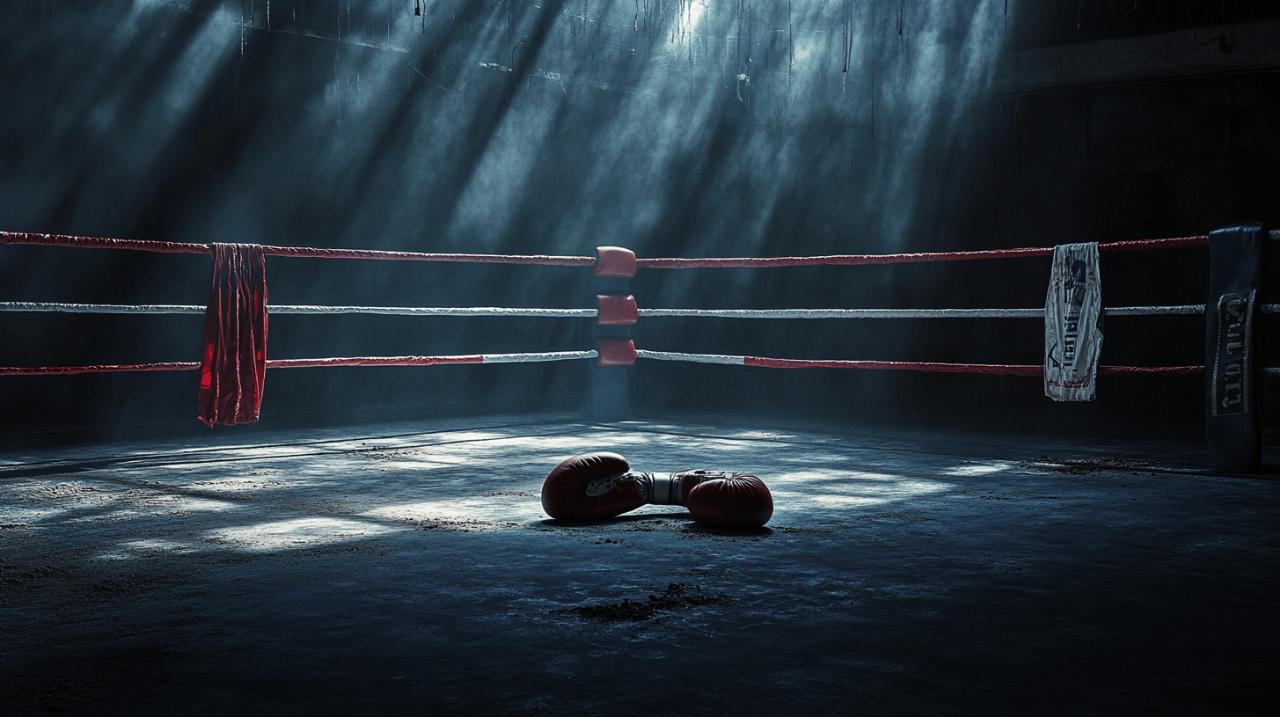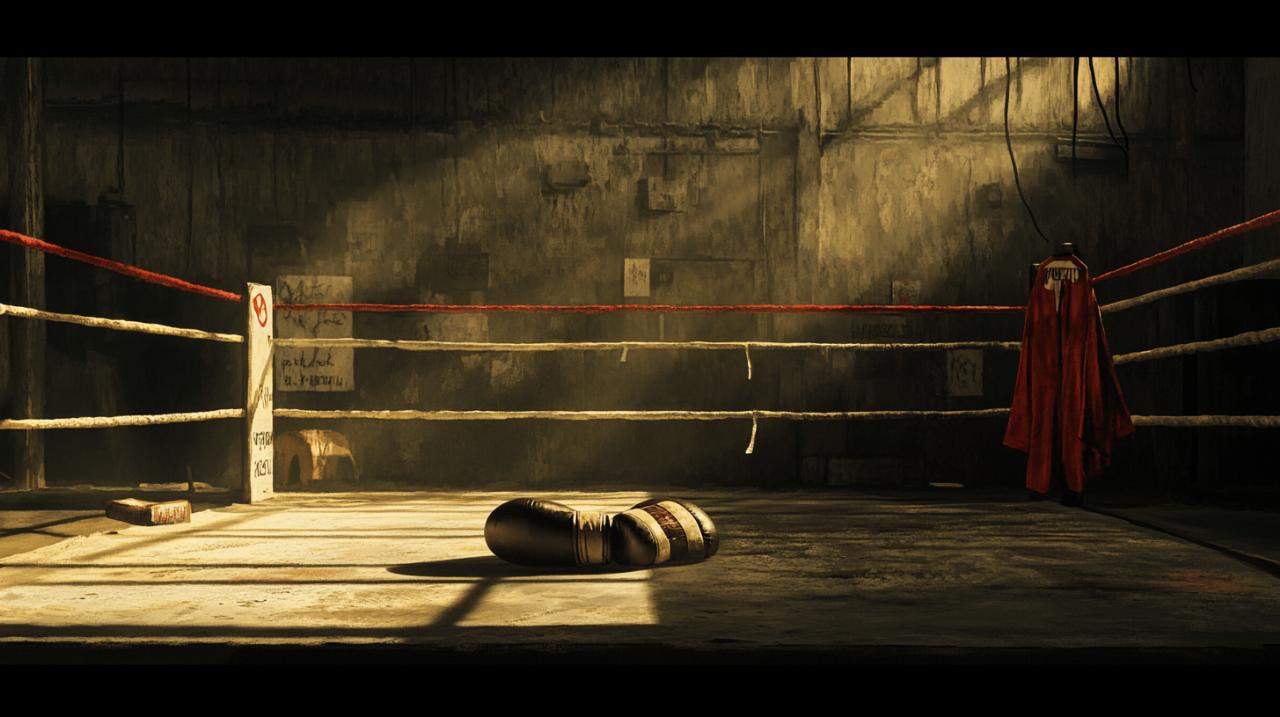The squared circle has long been a theatre of both triumph and tragedy, where warriors test their limits and audiences witness the raw spectacle of human courage. Yet beneath the roar of the crowd and the flash of championship belts lies a sobering reality that has haunted the sport for generations. The ring has claimed lives, and the stories of those who never left it standing serve as powerful reminders of the risks inherent in combat sports. Today, however, a revolution in medical science and regulatory oversight is transforming how the sport protects its athletes, offering hope that future generations of fighters will face fewer of the dangers that once seemed inevitable.
The heartbreaking legacy: ten warriors who fell in combat
A Chronicle of Courage and Calamity: From Benny Paret to Kim Duk-koo
The history of boxing is marked by moments of glory, but also by profound loss. Between the late nineteenth century and the early twenty-first century, the sport witnessed an average of thirteen fatalities each year, a grim statistic that underscores the inherent dangers of stepping into the ring. The 1920s alone recorded two hundred and thirty-three deaths, a shocking number that galvanised early efforts to improve safety standards. By the 2000s, improved medical protocols and regulatory reforms had reduced this figure to one hundred and three, yet each loss remained a tragedy that resonated far beyond the confines of the arena.
One of the most harrowing episodes in boxing history unfolded in 1930, when Frankie Campbell faced Max Baer in a bout that would end in Campbell's death. Baer, who would go on to become a world champion, was initially charged in connection with the tragedy but was later cleared of wrongdoing. The incident cast a long shadow over the sport and raised urgent questions about the adequacy of safety measures in place at the time. Nearly two decades later, in 1947, Jimmy Doyle succumbed to injuries sustained during a fight with the legendary Sugar Ray Robinson. Robinson, deeply affected by the outcome, took it upon himself to support Doyle's family, a gesture that highlighted the personal toll such events took on those involved.
The death of Davey Moore in 1963 marked another turning point in the conversation around fighter safety. Moore's passing not only inspired a poignant song by Bob Dylan but also prompted Pope John XXIII to condemn boxing publicly, calling into question the morality of a sport that could claim lives in such a manner. The outcry following Moore's death added momentum to reform efforts, though it would take further tragedies to bring about substantive change. In 1982, Kim Duk-koo died after an epic and brutal contest with Ray Mancini, a fight that remains etched in the collective memory of boxing fans. The aftermath of this bout led to a historic regulatory shift: championship fights were reduced from fifteen rounds to twelve, a decision aimed at minimising the cumulative damage fighters endured over the course of a match.
The Human Cost Behind the Glory: Remembering Robinson, Campbell, and Other Lost Champions
The stories of these fallen fighters are not merely historical footnotes; they are deeply human narratives that reveal the profound impact of loss on families, opponents, and the broader boxing community. Young Ali, who died following a bout with Barry McGuigan in 1982, left an indelible mark on McGuigan, who carried the weight of that tragedy for years. The emotional burden borne by fighters who have witnessed such outcomes is often overlooked, yet it is a critical aspect of the sport's darker side.
In 2011, Roman Simakov lost his life after a fight with Sergey Kovalev. Kovalev, recognising the gravity of the situation, provided financial support to Simakov's family, a compassionate act that underscored the bond shared by those who step into the ring. Five years later, Mike Towell suffered a fatal brain bleed following a fight with Dale Evans. The boxing community rallied in support of Towell's family, raising over fifty thousand pounds through a dedicated campaign. Such gestures of solidarity, while unable to reverse the loss, offered a measure of comfort and demonstrated the sport's capacity for empathy in the face of tragedy.
Scott Westgarth's death in 2018 was particularly poignant, as he had just secured a victory against Dec Spelman before collapsing. In the wake of Westgarth's passing, his family formed a close bond with Spelman, finding solace in their shared grief and mutual respect. The following year brought two more devastating losses. Maxim Dadashev died after a gruelling contest with Subriel Matias, leaving behind a wife and young son. Shortly thereafter, Patrick Day succumbed to injuries sustained in a fight with Charles Conwell, prompting renewed calls for enhanced safety measures across the sport. Each of these stories serves as a stark reminder that behind every statistic is a person whose life was cut short, along with loved ones left to navigate the aftermath.
The science of survival: medical breakthroughs transforming fighter protection
Neurological advances: how brain imaging and monitoring are saving lives
The evolution of medical science has brought about a seismic shift in how the boxing world approaches fighter safety. Advances in neurological research have been particularly transformative, offering insights into the mechanisms of brain injury and enabling more effective preventative measures. Modern brain imaging techniques, including magnetic resonance imaging and computerised tomography scans, allow medical professionals to assess a fighter's neurological health with unprecedented precision. These technologies have become integral to pre-fight screenings, ensuring that athletes are not entering the ring with pre-existing conditions that could prove catastrophic under the stress of combat.
Real-time monitoring during bouts has also emerged as a game-changing innovation. Sophisticated equipment now enables ringside physicians to track vital signs and detect early indicators of distress, facilitating swift interventions that can prevent minor injuries from escalating into life-threatening crises. The integration of these tools into standard practice represents a significant departure from the less rigorous protocols of earlier eras, when fighters often competed with little more than cursory medical oversight. By leveraging cutting-edge science, the sport is better equipped to identify at-risk athletes and make informed decisions about their ability to continue fighting.
From ringside resuscitation to rapid response teams: emergency medicine's new playbook
Beyond diagnostics, the field of emergency medicine has revolutionised the immediate response to injuries sustained in the ring. The presence of rapid response teams, trained specifically in the unique challenges posed by combat sports, has become standard at major boxing events. These teams are equipped with advanced resuscitation equipment and are prepared to administer critical care within moments of an incident, drastically improving survival rates and outcomes for injured fighters. The shift from reactive to proactive emergency protocols has been instrumental in reducing fatalities and ensuring that those who do suffer injuries receive the best possible care.
Moreover, the establishment of comprehensive emergency action plans at venues has further enhanced safety. These plans outline clear procedures for transporting injured fighters to nearby hospitals, coordinating with trauma specialists, and maintaining communication between ringside personnel and medical facilities. The emphasis on preparedness and coordination reflects a broader cultural shift within the sport, one that prioritises the well-being of athletes above all else. As emergency medicine continues to advance, the gap between injury and intervention narrows, offering fighters a greater chance of recovery even in the most dire circumstances.
Regulatory Revolution: How Governing Bodies Are Rewriting the Rules of Engagement
Weight class reforms and pre-bout screening: preventing mismatches that turn fatal
 The role of regulatory bodies in enhancing fighter safety cannot be overstated. In recent decades, governing organisations have undertaken sweeping reforms aimed at minimising the risks associated with boxing. One of the most significant changes has been the refinement of weight class regulations, which help to ensure that competitors are more evenly matched in terms of size and strength. Mismatches, where a significantly heavier or more physically imposing fighter faces an outmatched opponent, have historically been a contributing factor in fatal outcomes. By enforcing stricter weight divisions and more rigorous weigh-in procedures, regulators have reduced the likelihood of such dangerous disparities.
The role of regulatory bodies in enhancing fighter safety cannot be overstated. In recent decades, governing organisations have undertaken sweeping reforms aimed at minimising the risks associated with boxing. One of the most significant changes has been the refinement of weight class regulations, which help to ensure that competitors are more evenly matched in terms of size and strength. Mismatches, where a significantly heavier or more physically imposing fighter faces an outmatched opponent, have historically been a contributing factor in fatal outcomes. By enforcing stricter weight divisions and more rigorous weigh-in procedures, regulators have reduced the likelihood of such dangerous disparities.
Pre-bout screening has also been overhauled, with fighters now required to undergo comprehensive medical examinations before being cleared to compete. These assessments include neurological evaluations, cardiovascular testing, and reviews of medical history, all designed to identify any factors that could increase the risk of serious injury. The stringent nature of these screenings has led to the postponement or cancellation of fights where concerns about a fighter's health arise, a decision that, while sometimes controversial, reflects a commitment to safety over spectacle. The cumulative effect of these regulatory changes has been a marked decline in fatalities and a safer environment for those who choose to pursue careers in the sport.
The Role of Referees and Physicians: Enhanced Training and Intervention Protocols
Referees and ringside physicians occupy a crucial position in the safety infrastructure of modern boxing. Recognising this, governing bodies have invested heavily in enhanced training programmes that equip these officials with the skills and knowledge necessary to make split-second decisions that can save lives. Referees are now trained to recognise the subtle signs of distress that may indicate a fighter is in serious danger, such as unsteady movement, glassy eyes, or an inability to defend themselves effectively. The authority to stop a fight, once exercised with hesitation, is now a vital tool in the referee's arsenal, used proactively to prevent further harm.
Ringside physicians, too, have seen their roles expand significantly. No longer merely observers, they are active participants in the management of each bout, empowered to halt proceedings if they detect signs of injury that warrant immediate attention. The collaboration between referees and physicians has been formalised through clear communication protocols, ensuring that concerns are raised and addressed without delay. This partnership, underpinned by rigorous training and a shared commitment to fighter welfare, represents a cornerstone of the regulatory revolution that has transformed the sport in recent years.
The Future of Pugilism: Balancing Tradition with Technological Innovation
Smart Equipment and Wearable Tech: Real-Time Health Monitoring in the Ring
As technology continues to advance, the future of boxing safety looks increasingly promising. The development of smart equipment, including gloves and headgear embedded with sensors, is poised to revolutionise how the sport monitors the health of its athletes. These devices are capable of measuring the force of impacts, tracking head movements, and detecting anomalies in vital signs, all in real time. The data collected can be transmitted to ringside medical teams, enabling them to assess the cumulative effect of blows and make informed decisions about whether a fighter should continue. This level of granular monitoring represents a quantum leap from the rudimentary safety measures of the past and holds the potential to further reduce the incidence of serious injury.
Wearable technology extends beyond the ring itself, with devices designed to monitor fighters during training and recovery. These tools can identify overexertion, inadequate recovery periods, and other factors that may increase vulnerability to injury during competition. By integrating such technology into the daily routines of athletes, trainers and medical staff can take a more holistic approach to health management, addressing issues before they manifest in the heat of a bout. The adoption of these innovations is still in its early stages, but the trajectory is clear: technology will play an ever more prominent role in safeguarding the lives of those who compete.
Cultural Shifts in Sports: Building a Safer Tomorrow Whilst Honouring the Past
Perhaps the most profound change in the realm of boxer safety is not technological or regulatory, but cultural. The sport has begun to embrace a new ethos, one that recognises the inherent value of each fighter's life and prioritises their long-term well-being over the demands of entertainment. This shift is evident in the growing willingness of promoters, trainers, and fighters themselves to speak openly about the risks of the sport and advocate for continued improvements in safety standards. The stories of those who have been lost, from Frankie Campbell to Patrick Day, are no longer relegated to the margins of boxing history; they are central to the ongoing conversation about how the sport must evolve.
At the same time, there is a deep respect for the traditions and heritage that make boxing what it is. The challenge lies in balancing this reverence for the past with the imperative to protect future generations. The reduction in championship rounds, the introduction of advanced medical protocols, and the embrace of technological innovation all represent steps towards a safer future, yet they do not diminish the sport's fundamental character. Instead, they enhance it, ensuring that the bravery and skill displayed in the ring can be celebrated without the shadow of preventable tragedy. As the boxing community continues to honour the memory of those who have fallen, it also looks forward to a future where the squared circle is a place of triumph, not loss, and where every fighter has the opportunity to leave on their own terms.


Comments are closed